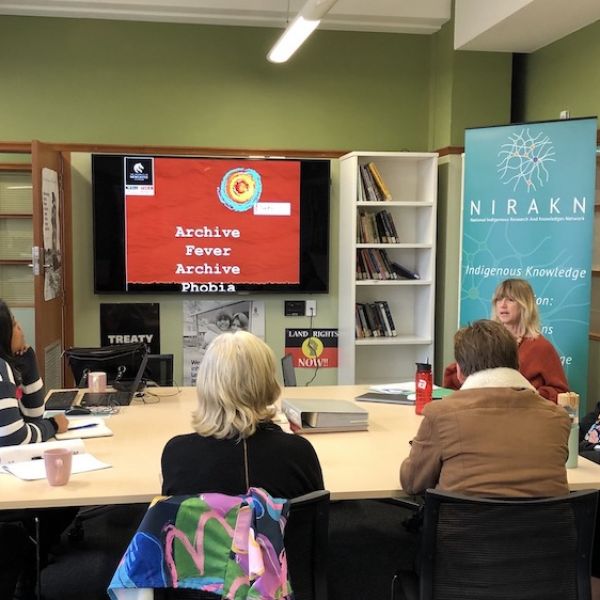Archive fever – Archive phobia: A seminar on archival research for students researching Indigenous histories
Professor Victoria Haskins’ journey into archival research began with a box of diaries, letters and photographs found in her aunty’s garage in Woolgoolga, NSW.

The box was sitting on top of another ten or so boxes, containing the papers of her late great-grandmother Joan Kingsley-Strack, known to the family as “Ming”.
As Victoria put the papers in order, she learned that Ming, who had been an activist for Aboriginal rights, campaigned alongside First Nations activists, Pearl Gibbs and Bill Ferguson, in Sydney during the 1930s.
She also pieced together the stories of four young First Nations women who had worked for Ming and helped to shape her activism.
The discovery of these forgotten papers sparked her fascination with archival research and the histories that can be drawn out from documentary records.
It also inspired her ongoing research on the history of domestic labour and cross-cultural relationships between Indigenous and non-Indigenous women in settler colonial histories.
In a seminar delivered at Purai Global Indigenous History Centre last week, Professor Haskins and post graduate student, Truman Smith, shared tips and tricks with Newcastle University’s HDR students who are undertaking archival research into Indigenous histories.
Mr Smith, who is close to submitting his research for examination, relied extensively on colonial government archives from the Queensland State Archives to research his thesis, "Unprovoked Barbarity": Kidnapping on Queensland’s Frontier, 1859 – 1897.
“Talk to anyone you can who’s worked previously in those archives,” he told attendees.
Professor Haskins also advised students to be fully prepared before visiting any archive.
“Contacting archive personnel before your visit, asking what you need to bring and if digital cameras are permitted is usually a good place to start,” she said.
Professor Haskins said that for example, when she visited the United States National Personnel Records Center (NPRC) in St Louis, Missouri, to look at the records of the Indian Service matrons who placed Native American girls and women in domestic work, she needed to get a letter from the Chief of the US Military Operations Branch giving her permission to bring a digital camera with her.
In the area of Indigenous history she told students to “be prepared to read some really disturbing stuff.”
“You might also find information you do not have permission to view because they have been misfiled,” she said.
Both Mr Smith and Professor Haskins agree that building a good rapport with an archivist can be the make or break of locating exacting information that is particularly relevant to students' own research.
“Archivists can be gatekeepers or they can be really hospitable, sharing and wonderful creatures,” Professor Haskins said.
Her final words of advice were, “It takes time to know the archives and also, you get the feeling that it takes a while for the archives to get to know you.”
Contact
- Jacqueline Wright
- Phone: 0428 393 801
- Email: jacqui.wright@newcastle.edu.au
Related news
- Healthy recognition: Dietitian earns prestigious Australian science honour
- Healthy recognition: Dietitian earns prestigious Australian science honour
- Nine Newcastle teams secure $5.4m in ARC Discovery grants to unearth new knowledge
- Heart of the problem is short lifespan of disease prevention programs
- University of Newcastle commemorates graduate excellence
The University of Newcastle acknowledges the traditional custodians of the lands within our footprint areas: Awabakal, Darkinjung, Biripai, Worimi, Wonnarua, and Eora Nations. We also pay respect to the wisdom of our Elders past and present.